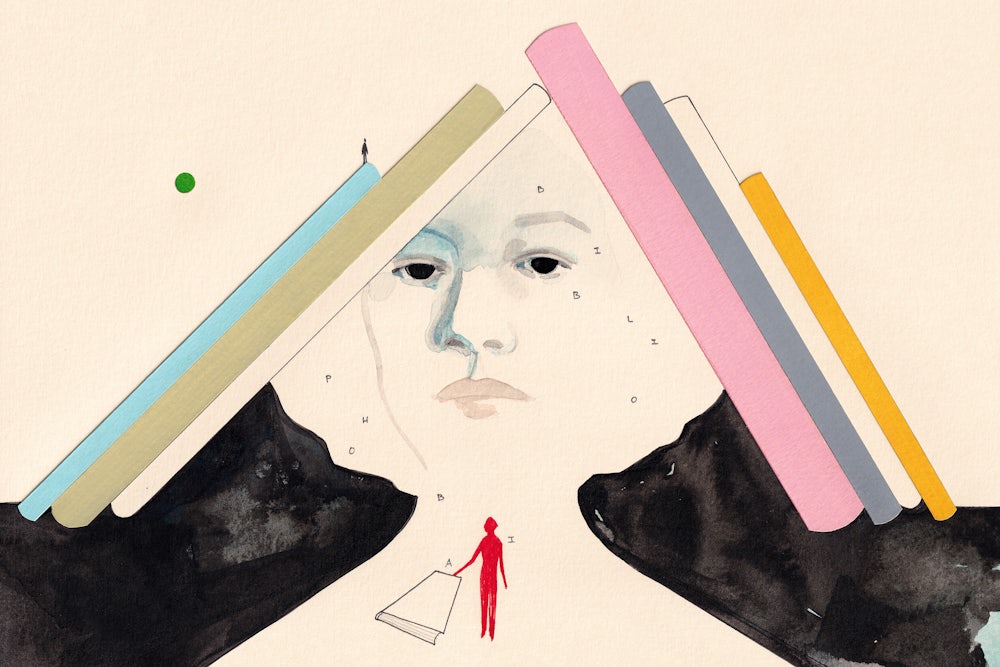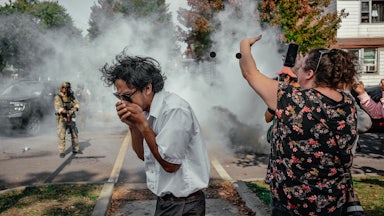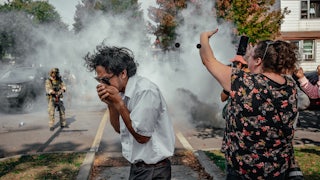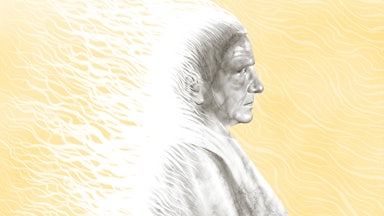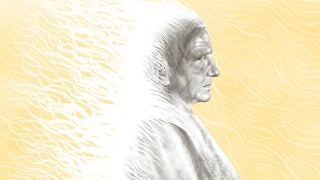Sarah Chihaya’s memoir Bibliophobia begins in a hospital when she is in the midst of a nervous breakdown, and she wastes no time telling us what caused it: “Reader, it was the books that did it.” For Chihaya, reading has always meant trouble: “Sadness and reading, self-harm and writing, are the violent lifelong habits that made me who I am. For me, being a depressed person and being a reader-writer are knotted up in each other all the way back to the beginning.” She writes about her relationship with books as “an uncomfortable but necessary vacillation between love and terror—between bibliophilia and bibliophobia.”
Her formative (or deformative) relationship with books took hold when she was a child in Ohio, stretching from her early immersion in L.M. Montgomery’s Anne of Green Gables to her repeated rereadings of Ruth Ozeki’s A Tale for the Time Being when she was a Princeton professor in her thirties. It’s an obsession that builds to the moment of crisis when she finds herself in the grip of acute bibliophobia, facing down a ticking tenure clock while unable to read at all. Her memoir takes the form of an absorbing “howdunit,” tracing the complicated story of Chihaya’s life with books, and the varied ways that they contributed to her collapse.
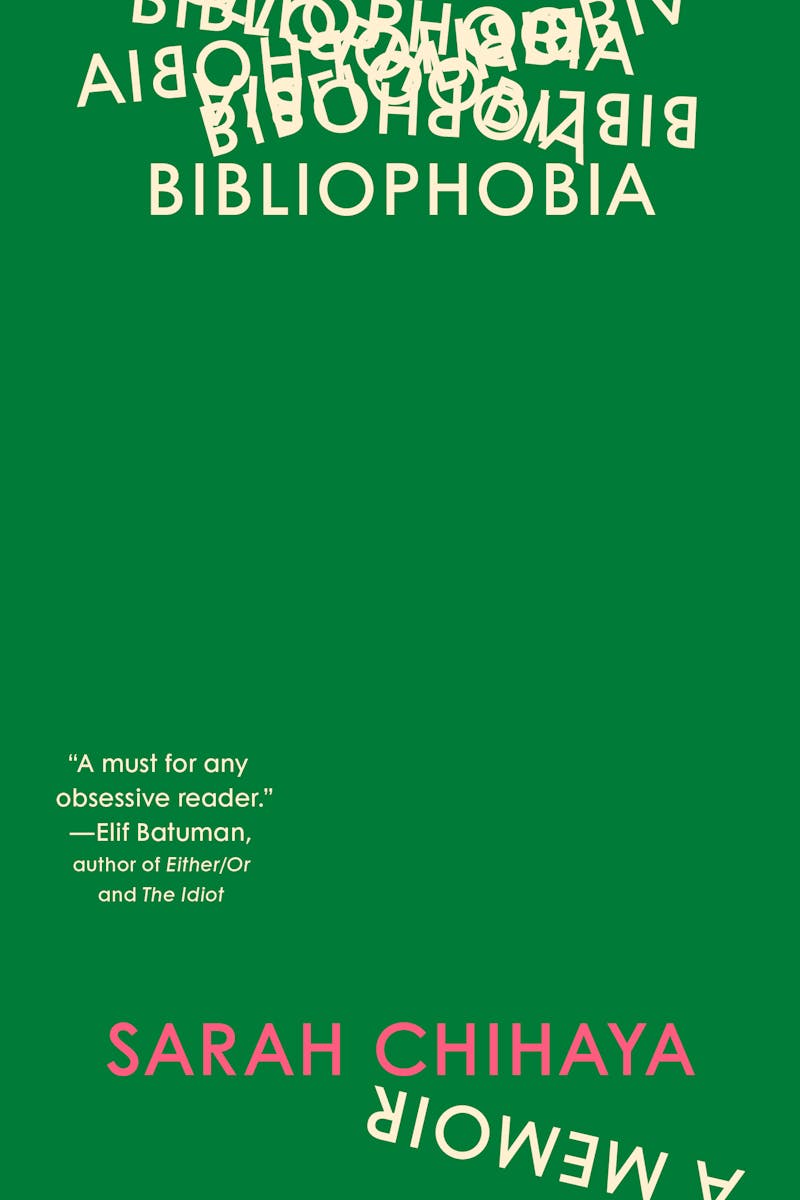
Although Bibliophobia is, among other things, a tale of muted despair, it crackles with the electrical charge of a broken taboo. Quiet as it’s kept—at least in modern-day literary circles—reading is a perilous practice. Though it can obviously be pleasurable, it can also be unpleasant, compulsive, destabilizing, or overwhelming. Our metaphors for reading hint at this: There is something implicitly troubling about being addicted to reading, about “losing yourself” in a book, or even being “unable to put it down,” like the victim of a paralyzing curse. Chihaya not only names these dangers—she re-creates them for us, evoking the way reading can mirror the soft undertow of an opiate or the lethal sharpness of a razor’s edge.
Reading is especially risky for someone like Chihaya, because it isn’t just a pastime for her. It’s her primary mode of being in the world, in addition to being her job. She gravitated to fiction at the age of 4 as a way of escaping from family conflict and ended up reading professionally at the most elite levels, competing in one of the toughest academic job markets in history. (Though Chihaya is self-deprecating throughout, the fact remains that you have to be pretty virtuosic at reading for a multibillion-dollar educational institution to pay you to do it full-time.) At one point, she writes about her childhood fascination with legendary ice-skater Kristi Yamaguchi, but the athlete I kept thinking about as I read was Simone Biles, who famously got “the twisties” at the 2020 Olympics. What happens when the thing you’re best at, which is incidentally the thing that pays the bills, is something you can no longer safely do—something you are worried might kill you if you keep trying?
Bibliophobia arrives as a welcome splash of lemony sourness to cut the bland sweetness of much popular discourse about books, which can tend toward boosterism, bibliotherapy, or what Jessica Pressman calls “bookishness”—a nostalgic relation to books as objects and symbols that sometimes has little to do with the actual practice of reading. Despite the fact that we’re living in an age of book bans, trigger warnings, and a rising ocean of AI-generated content, or perhaps because of all these things, there is often a celebratory, self-congratulatory quality to identifying as a “book person.” It’s the notion that, to invoke the name of a beloved Brooklyn bookstore, Books Are Magic. They signify leisure, self-cultivation, and a temporary reprieve from the tyranny of screen time. More recently, they evoke a lost era when the president read things longer than a Fox News chyron and the Department of Education was not in danger of dismantlement. Among many self-proclaimed readers, books can seem about as threatening as a color-coordinated Instagram “shelfie” or a cozy pair of socks printed to look like a library checkout card.
Indeed, books are often hailed as a cultural panacea. To take two examples among thousands, the ad copy for an acclaimed book about reading to your kids sounds a bit like an old-time traveling salesman hawking a patent elixir, characterizing reading as “a fast-working antidote to the fractured attention spans, atomized families and unfulfilling ephemera of the tech era, helping to replenish what our devices are leaching away.” And a recent New York Times op-ed by an English professor prescribes novels as a remedy for the evils of Trump, Andrew Tate, video games, pornography, and “the manosphere,” arguing that young men “need better stories” and “reading fiction is … an excellent way to improve one’s emotional I.Q.” From childhood ADHD to toxic masculinity and fascism, books will apparently cure what ails us!
This kind of instrumentalizing approach to reading has come in for a fair amount of pushback. Jennifer Wilson has criticized what she calls the “Empathy Industrial Complex,” which treats literature as a source of valuable life lessons, while Lauren Michele Jackson has protested the ubiquitous “anti-racist reading lists” that proliferated during the heyday of Black Lives Matter, arguing that “it is unfair” to ask literature “to do this sort of work for someone.” (She recommends that “if you want to read a novel, read a damn novel, like it’s a novel.”) Elaine Castillo’s personal polemic How to Read Now warns against reducing reading to a kind of “ethical protein shake.”
Still, the insistence on the salutary effects of reading persists. And a didactic or therapeutic approach to reading characterizes much of the burgeoning genre of “bibliomemoir” that has flourished over the last decade and a half. Bibliomemoir—defined by Joyce Carol Oates as “a subspecies of literature combining criticism and biography with the intimate, confessional tone of autobiography”—lends itself to uplifting stories about books serving the role of teachers, therapists, friends, family, or spiritual EMTs. Sometimes, the genre’s default books-to-the-rescue plot is explicitly spelled out in subtitles such as “How Six Novels Taught Me About Love, Friendship, and the Things That Really Matter,” “How Books Restored My Appetite,” “Seeking Solace in Virginia Woolf,” or “A Memoir in Praise of the Books That Saved Me” (from, respectively, William Deresiewicz’s A Jane Austen Education, Laura Freeman’s The Reading Cure, Katharine Smyth’s All the Lives We Ever Lived, and Glory Edim’s Gather Me). Other times, the celebration of reading is less reducible to a simple takeaway, as when Elif Batuman learns to be a writer by romping around Russia in the footsteps of Tolstoy, or Jenn Shapland finds a kind of queer kinship with Carson McCullers. But the genre’s underlying pro-book message remains.
For most bibliomemoirists, reading is a sustaining source of meaning. It restores or shores up a sense of self. And this bedrock belief in reading’s benefits is hard to shake. Even Elaine Castillo, a sharp critic of reading as protein-maxing, passionately proclaims her trust in the transformative power of books as a foundational creed: “I haven’t lost faith in the capacity of books to save us, remake us, take us by the scruff and show us who we were, who we are, and who we might become.”
Chihaya rejects this kind of faith-based relationship to books: “Books, like people, should not be asked to save us.” She has arrived at this hard-won knowledge after a lifetime of asking books to do exactly that, and repeatedly feeling them give way beneath her. Indeed, she views all her past attempts to read “for something”—“for comfort, for pleasure, for validation, for comprehension”—as proof that she used to be a “terrible reader.” Bristling at accounts of reading that are premised on progress (“I am disturbed and irritated whenever I encounter the moralizing claim that the main point of reading fiction is relentlessly positive self-improvement”), she instead characterizes reading as a thoroughly mixed bag: “Sometimes it is nutritious. Sometimes it is poisonous. Sometimes—surprisingly often—it is both.”
Typically, discourse about the dangers of reading focuses on either books’ toxic “content” or the risks of identification with fictional characters. Moms for Liberty and other pro-censorship activists behind this country’s current book-banning spree fall into the first category. (Lyta Gold’s Dangerous Fictions offers a useful overview of the last century of similar moral panics in the United States.) Don Quixote, Northanger Abbey, and Madame Bovary belong to the second category: cautionary tales dramatizing the absurdity of moving through the “real world” like a romantic hero or heroine.
Bibliophobia broadens, deepens, and disturbs our sense of reading’s risks. For Chihaya, the danger does not lie in the content of books but in her way of relating to them; not in identification with a particular character, but in her vulnerability to the violence of reading itself. At one point, she describes her propensity to depression as a lack of emotional shock absorbers, which reminded me of a passage from Virginia Woolf’s “How Should One Read a Book?”: “Great writers often require us to make heroic efforts in order to read them rightly. They bend us and break us. To go from Jane Austen to Hardy … is to be wrenched and distorted, thrown this way and then that.” Bibliophobia is an intimate account of this bending, breaking, wrenching, and distorting.
I took perverse pleasure in Chihaya’s troubling, sensorily rich descriptions of reading—her attention to what Castillo calls its “specific and sublime sensual immersion,” and the ways it is simultaneously an embodied and disembodying experience. Chihaya finds new and unsettling images for the precise and varied ways that books have made and unmade her. She describes how the Anne of Green Gables series took her to “a ghostly place, doing nothing, touching no one, diffused on the breeze like pollen spreading over the Avonlea fields.” How Toni Morrison’s The Bluest Eye “tore at me”; how it became “not the kind of book I wanted to escape to, but rather, a book I couldn’t escape from.” How Ali Smith’s Artful reminded her that “reading felt to me pleasantly like dangling one foot in the grave.”
From childhood, Chihaya’s relationship to reading is structured by “two imaginary texts”: the book of her own life, which she imagines is predestined to end in suicide, and a book she’s always looking for, “a text that would explain everything to me.” One or both of these texts haunt each of her encounters with books. Her chapter on Anne of Green Gables is a ghost story about the dangerous desire to disappear from the world, whether through reading or suicide. Her chapter on The Bluest Eye—“terrifying, unexpected, essential”—is a horror story about what Chihaya calls a “Life Ruiner”: “the book you can’t ever recover from, that you never stop thinking about, and that makes you desperate to reach that frightening depth of experience with other books.”
Her take on A.S. Byatt’s Possession, written as a rom-com-gone-wrong, would work as an amusing riposte to the New York Times op-ed; here the danger of reading is that it makes you think it has raised your emotional IQ and helped you understand the world, when in fact it very much has not. Her reading of Yiyun Li’s Dear Friend, From My Life I Write to You in Your Life grapples with the fear that a book can express your own thoughts and feelings too closely—that it can make you, and anything you might write, redundant. (This fear is groundless. Li’s memoir of reading, writing, and depression might be similar to Chihaya’s in sensibility and subject matter, but its relationship to reading is comparatively untortured, its tone is more subdued, its form is more fragmentary. It’s an entirely different book.)
Bibliophobia’s many books and plots are held together firmly by its wry, reflective narrative voice. At one point, Chihaya jokes about being a “legit midcentury lady writer” by virtue of her nervous breakdown, and in fact her style is reminiscent of a mordant yet companionable midcentury Virago Modern Classic. Sarah the character might be struggling, but her story is told in a stylish, self-aware, sometimes hilariously self-ironizing tone.
Occasionally the self-deprecation verges on self-laceration, which I suppose makes sense in a book about self-harm. I did a word search and confirmed there were 18 uses of “stupid,” “stupidly,” or “stupidity” in the book, nearly all of them directed at Chihaya herself. She is relentlessly self-critical, and at times I couldn’t help wanting her to turn her blade outward to critique some of the external structures that failed to support her, notably the university. Though she makes a couple of mild jokes about the limitations of the academic monograph as a genre, she presents the difficulties she had in academia as her problem: She simply wasn’t mentally healthy enough to make it work. I wondered whether the problem wasn’t equally or mostly with the rigid institutional expectations that forced her to keep trying to write an obligatory “tenure book” instead of getting to work on the one she was born to write. But the unapologetic inwardness of Bibliophobia is also its strength. Making a broader argument about the problems with the university or “the state of criticism today” would make the book easier to summarize and easier to dismiss. As a deeply idiosyncratic personal account, it offers a reading experience as haunting as the ones it describes.
Ultimately, Bibliophobia is a book of paradoxes. It’s a profoundly satisfying book about the maddening inadequacy of books. A fluidly written story about devastating writer’s block. An anti-narrative narrative with a classically pleasing structure of rising action, crisis point, denouement that would look beautiful sketched on a chalkboard.
What Chihaya learned, through painful experience, was that books are not enough. But a reader of Bibliophobia can’t help but ask: Would it be sufficient to learn this lesson and not write about it? Could this story have had any other conclusion than becoming a book? Perhaps in the end, at least for truly bookcentric people, there is no escape.
It’s fitting that the book’s last scene depicts Chihaya and a friend reading together, “bent over the book companionably, slowly unfolding the meaning.” The scene dramatizes the utter irrepressibility of reading in Chihaya’s life, even after everything, like a lush resurgence of foliage growing on the site of a volcanic explosion. But in contrast to the book’s many scenes of solitary reading as a way to vanish or escape, it’s a scene about the way books can facilitate presence and embodied intimacy with the world beyond their pages. In the words of the dedication, it’s about “the friends who brought me back.”
